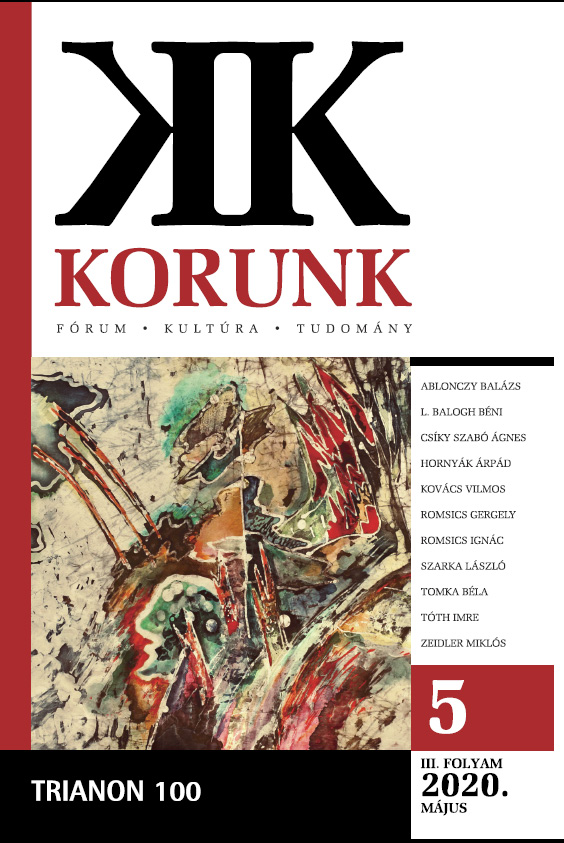„Romániának oda kell adni Erdélyt”. A magyar–román határ kijelölése a békekonferencián
“Transylvania Must Be Handed Over to Romania”: The Delineation of the Hungarian-Romanian Border at the Peace Conference
Author(s): Béni L. BaloghSubject(s): Interwar Period (1920 - 1939)
Published by: Korunk Baráti Társaság
Keywords: Romania; Transylvania; Hungarian-Romanian border
Summary/Abstract: The end of the First World War found Romania at the side of the winners, while Hungary was at the side of the losers. At the end of 1918, early 1919, the Allied powers recognized Romania as their ally, which also decided the fate of Transylvania. A debate emerged at the Peace Conference about the precise delineation of the border, i.e. regarding the assessment of the inordinate territorial claims of the Romanian party. First of all, it had to be decided to what extent the ethnic principle was to be applied and what the role of strategic, economic and transportation aspects should be. These issues were at the forefront of Romanian-Yugoslavian territorial committee’s meetings in February and March 1919. The American delegation had the most favorable position toward the Hungarians, recommending the easternmost border, while the French proposed the westernmost alternative. The British have put forward an intermediary solution, while the Italians did not clarify their position. The territorial committee established the new Hungarian-Romanian border on 18 March 1919, followed by the Council of Four on 12 June 1919. Their solution was adopted by the Treaty of Trianon, signed on 4 June 1920. The new border was somewhat less favorable from the Romanian and slightly more advantageous from the Hungarian perspective, compared to the provisions of the secret Bucharest treaty from 1916. Romania received 83.8 thousand square kilometers of the demanded 93.2 thousand square kilometers of land in Transylvania and in the Partium region, amounting to 10% (almost 10 thousand square kilometers) less than it demanded. Romania also received, in addition, two thirds of the Banat (19.7 thousand square kilometers), in total 103 thousand square kilometers from the territories of historical Hungary. According to the data of the 1910 Hungarian population census, these areas were inhabited by 5 million 257 thousand people, 31.6% (1.6 million) of them Hungarian speakers.
Journal: Korunk
- Issue Year: 2020
- Issue No: 05
- Page Range: 14-24
- Page Count: 11
- Language: Hungarian

